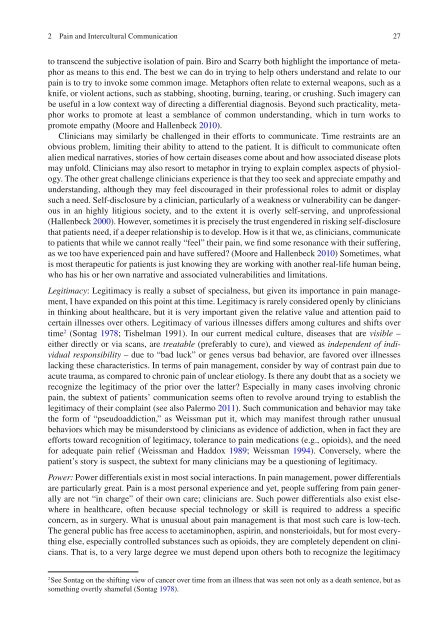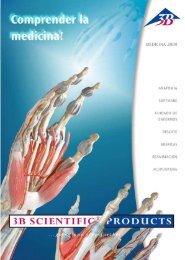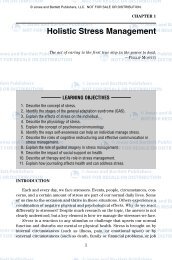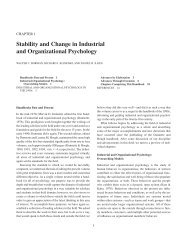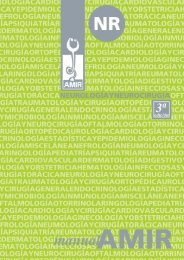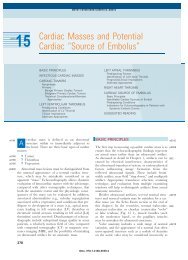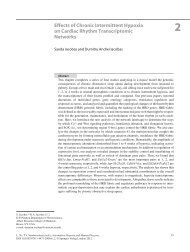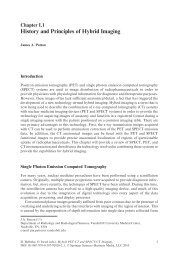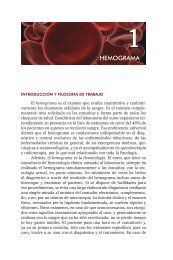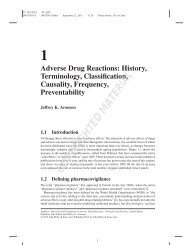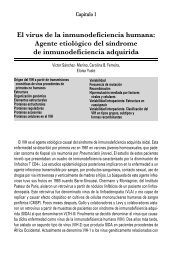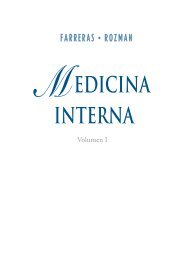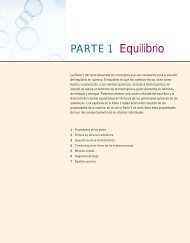Download Sample pages 1 (pdf, 195 kB) - Springer
Download Sample pages 1 (pdf, 195 kB) - Springer
Download Sample pages 1 (pdf, 195 kB) - Springer
Create successful ePaper yourself
Turn your PDF publications into a flip-book with our unique Google optimized e-Paper software.
2 Pain and Intercultural Communication<br />
to transcend the subjective isolation of pain. Biro and Scarry both highlight the importance of metaphor<br />
as means to this end. The best we can do in trying to help others understand and relate to our<br />
pain is to try to invoke some common image. Metaphors often relate to external weapons, such as a<br />
knife, or violent actions, such as stabbing, shooting, burning, tearing, or crushing. Such imagery can<br />
be useful in a low context way of directing a differential diagnosis. Beyond such practicality, metaphor<br />
works to promote at least a semblance of common understanding, which in turn works to<br />
promote empathy (Moore and Hallenbeck 2010 ) .<br />
Clinicians may similarly be challenged in their efforts to communicate. Time restraints are an<br />
obvious problem, limiting their ability to attend to the patient. It is diffi cult to communicate often<br />
alien medical narratives, stories of how certain diseases come about and how associated disease plots<br />
may unfold. Clinicians may also resort to metaphor in trying to explain complex aspects of physiology.<br />
The other great challenge clinicians experience is that they too seek and appreciate empathy and<br />
understanding, although they may feel discouraged in their professional roles to admit or display<br />
such a need. Self-disclosure by a clinician, particularly of a weakness or vulnerability can be dangerous<br />
in an highly litigious society, and to the extent it is overly self-serving, and unprofessional<br />
(Hallenbeck 2000 ) . However, sometimes it is precisely the trust engendered in risking self-disclosure<br />
that patients need, if a deeper relationship is to develop. How is it that we, as clinicians, communicate<br />
to patients that while we cannot really “feel” their pain, we fi nd some resonance with their suffering,<br />
as we too have experienced pain and have suffered? (Moore and Hallenbeck 2010 ) Sometimes, what<br />
is most therapeutic for patients is just knowing they are working with another real-life human being,<br />
who has his or her own narrative and associated vulnerabilities and limitations.<br />
Legitimacy : Legitimacy is really a subset of specialness, but given its importance in pain management,<br />
I have expanded on this point at this time. Legitimacy is rarely considered openly by clinicians<br />
in thinking about healthcare, but it is very important given the relative value and attention paid to<br />
certain illnesses over others. Legitimacy of various illnesses differs among cultures and shifts over<br />
time 2 (Sontag 1978 ; Tishelman 1991). In our current medical culture, diseases that are visible –<br />
either directly or via scans, are treatable (preferably to cure), and viewed as independent of individual<br />
responsibility – due to “bad luck” or genes versus bad behavior, are favored over illnesses<br />
lacking these characteristics. In terms of pain management, consider by way of contrast pain due to<br />
acute trauma, as compared to chronic pain of unclear etiology. Is there any doubt that as a society we<br />
recognize the legitimacy of the prior over the latter? Especially in many cases involving chronic<br />
pain, the subtext of patients’ communication seems often to revolve around trying to establish the<br />
legitimacy of their complaint (see also Palermo 2011 ) . Such communication and behavior may take<br />
the form of “pseudoaddiction,” as Weissman put it, which may manifest through rather unusual<br />
behaviors which may be misunderstood by clinicians as evidence of addiction, when in fact they are<br />
efforts toward recognition of legitimacy, tolerance to pain medications (e.g., opioids), and the need<br />
for adequate pain relief (Weissman and Haddox 1989 ; Weissman 1994 ) . Conversely, where the<br />
patient’s story is suspect, the subtext for many clinicians may be a questioning of legitimacy.<br />
Power: Power differentials exist in most social interactions. In pain management, power differentials<br />
are particularly great. Pain is a most personal experience and yet, people suffering from pain generally<br />
are not “in charge” of their own care; clinicians are. Such power differentials also exist elsewhere<br />
in healthcare, often because special technology or skill is required to address a specifi c<br />
concern, as in surgery. What is unusual about pain management is that most such care is low-tech.<br />
The general public has free access to acetaminophen, aspirin, and nonsterioidals, but for most everything<br />
else, especially controlled substances such as opioids, they are completely dependent on clinicians.<br />
That is, to a very large degree we must depend upon others both to recognize the legitimacy<br />
2 See Sontag on the shifting view of cancer over time from an illness that was seen not only as a death sentence, but as<br />
something overtly shameful (Sontag 1978 ) .<br />
27


